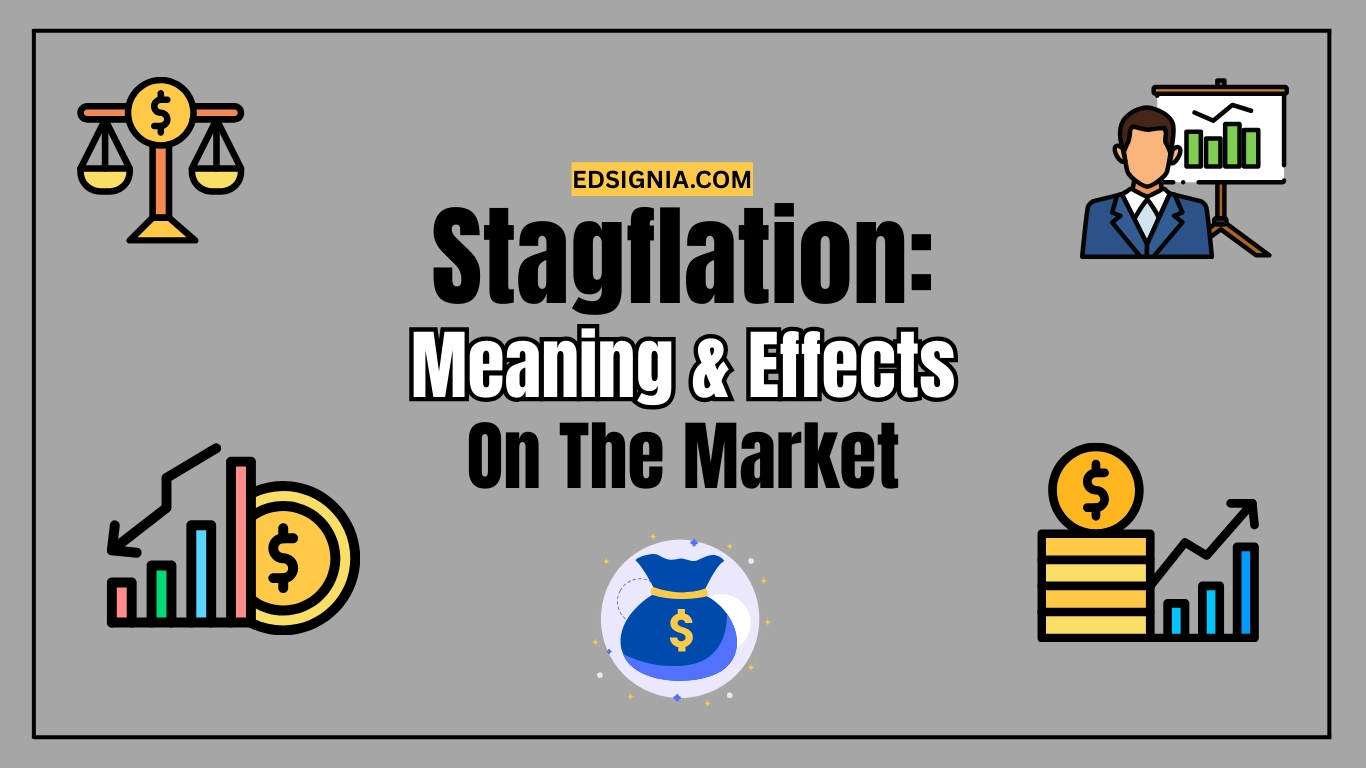Introduction
Today, we will be taking a look at an economic condition which is relatively unknown for the general populace. It is the lesser known cousin of inflation and recession and can cause major issues if it is not controlled in time. If you’ve taken up economics as a major during your schooling or university days, you must have rightfully guessed our topic of discussion.
We will be taking a closer look at stagflation. It is an economic condition which simultaneously witnesses a rise in prices of commodities and an extremely diminished growth rate. There is also a high rise in unemployment which makes matters worse.
It was previously assumed that stagflation could not happen in an economy. This assumption was held because the reasons leading to inflation and stagnation were polar opposites. Stagflation also went against the phillips curve model which states that a rise in inflation would be accompanied by a rise in employment.
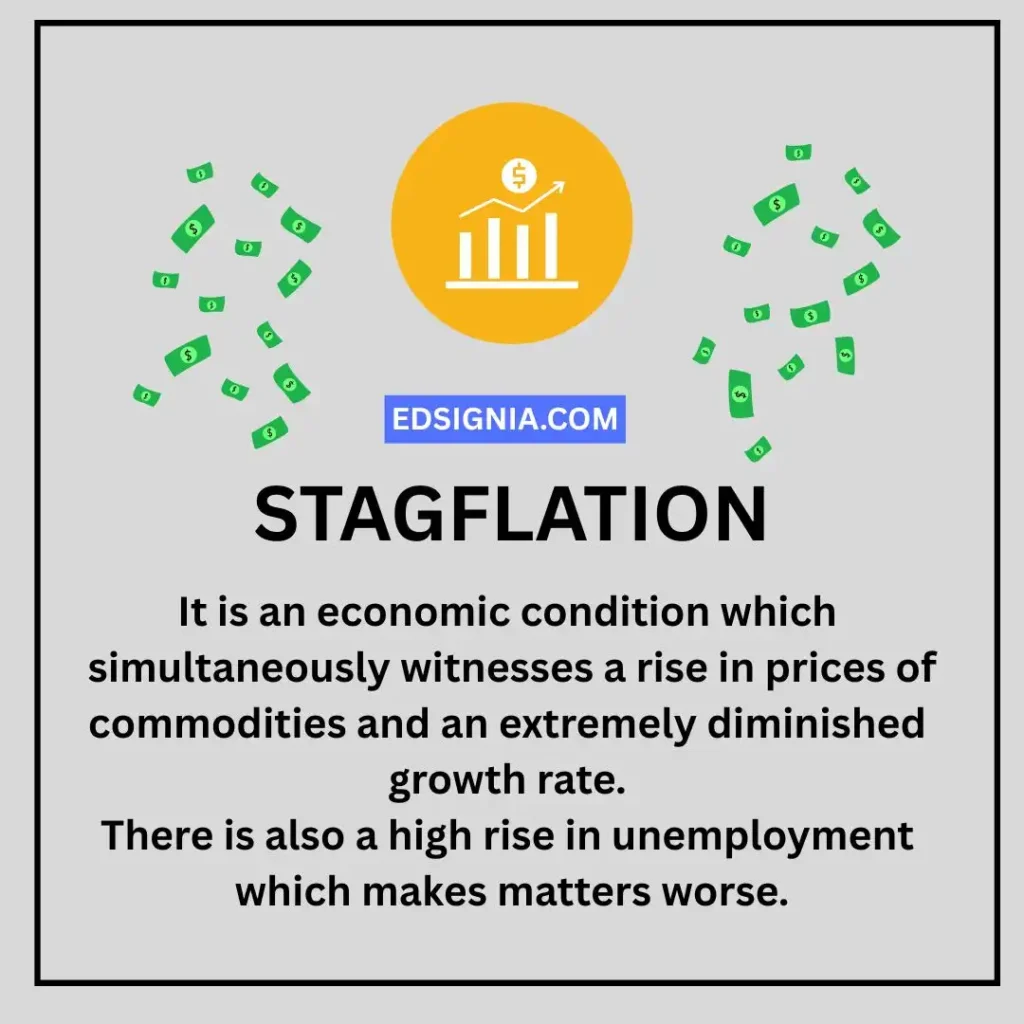
Components of Stagflation
Stagflation is not something which appears out of thin air. It requires multiple missteps one after the other in quick successions to happen similar to a game of domino. Luckily for us, there has been only one major recorded case of stagflation that was in the 1970s.
However, it is essential to be cautious as to prevent any such recurrence in the contemporary period. To do that, we need to take a look at some of the major components of stagflation. They are as follows:
Slow or Non-existent Growth
The term stagflation itself is made up of primarily two words. They are namely: stagnation and Inflation. When there is a sudden rapid decline or halt in the growth rate of a nation, alarm bells go off for all the concerned parties.
To be more precise, whenever a relatively stable economy witnesses a steep decline in its GDP growth rate, this is the first cause of concern. Generally, such an occurrence is rare due to the constant rise of demand and supply. This demonstrates that there is a fall in the production of goods and services and buyers have drastically reduced their consumption.
Rise in Inflation
When there is an increase in the price of most commodities, this situation is known as Inflation. There can be many reasons for the rise in inflation. In this case, the most probable cause is facing major issues with the supply chain.
Slight inflation is not a cause of concern because it is believed that the income of the consumers will rise in proportion with the rise in prices of goods and services. It becomes troubling when the supply of raw materials for the creation of finished goods is impacted. This pushes the manufacturers to pass on their cost to the consumers.
As a result, commodities become more expensive and buyers limit their consumption in an attempt to reduce their total spending. Due to which, a sudden rise in inflation is witnessed in an economy.
An Increase in Unemployment
When various economic activities notice a downturn, it leads to a reduction in the workforce. It leads to the creation of people who are willing and able to work but cannot find jobs due to the economic climate. This leads to a rise in unemployment.
We just discussed that a rise in inflation is not a major concern if the income of the consumers increases proportionally. However, an essential identifier of stagflation is the rise of unemployment along with inflation. As stagflation went against the conventional norm of the phillips curve, a lot of conventional wisdom was reconsidered.
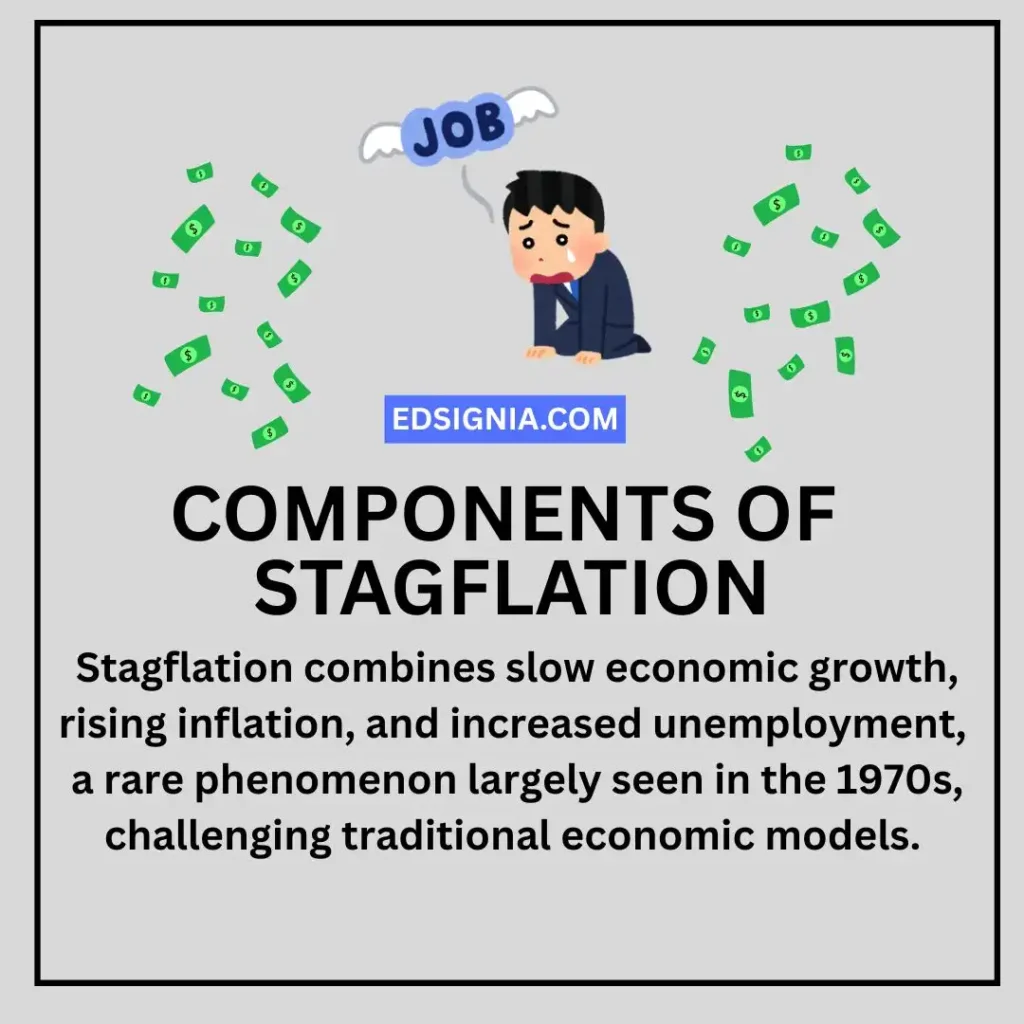
Reasons for Stagflation
Similar to other economic conditions, stagflation does not exist in a vacuum. There are a lot of different causes which lead to this condition. Let us take a brief look at some of the reasons which are the major causes for the condition.
Supply Chain Disruption
There are numerous reasons for disruption of a supply chain. It can either be due to political tensions, a sudden rise in domestic demand for the product to be exported, or both parties unable to come to terms for a pricing model. Regardless of the reason, supply chain disruptions are one of the main reasons for stagflation.
Production suffers because the raw materials become scarce to obtain and there is no buying intent in the market for the finished product. Manufacturers either stop producing or they have to hike the prices for common items as well. Due to this, there is an increase in the price of essential commodities.
Core Structural Issues
Most of the fault lies with the improper foundational structure of an economy. In simple terms, when innovation is stifled due to red tape, there is a disconnect between the producers and the consumers, and strict policies without checks and balances are in place, it leads to major economic problems.
It is not just limited to markets. Inefficient fiscal policies are equally to blame for such a condition. When there is an unchecked money supply in the market, it exacerbates the inflation situation. Coupled with the non existent growth rate and unemployment concerns, it gives rise to stagflation.
As previously stated, stagflation will only occur when most of the common issues go unchecked. None of these negative economic conditions would have ever happened if early warning signs were noticed on time.

Effects on the Market
With every negative economic condition, the biggest loser is the market and everyone involved with it. This means that we are all affected when the market faces a downturn. Economic instability affects everyone albeit to a different extent. Let’s take a look at the most visible impacts of stagflation in brief.
Poor Living Standards
As unemployment rises with simultaneous rise in unemployment, the biggest impact of stagflation is observed by the common public. With the reduction in the actual real income, households start to limit their spendings or use up their savings to make ends meet. This is accompanied with a rise in the price of food and housing.
Oftentimes, these adverse effects are extremely hard to recover from without external assistance. A reduction in wages or earning potential mixed with rising prices are detrimental for any nation. These are prime examples of severe economic unrest which can lead to a sharp decline in the living standards.
Increased Business Volatility
Even businesses are not spared by the impact of stagflation. This is because there are high levels of uncertainties with reference to the market condition. Business activities, especially the ones dealing with manufacturing, are difficult to undertake in an economic landscape which cannot be predicted with some level of certainty.
To make matters worse, businesses also have to comply with the different regulations for different places where they are in operation. Most of the businesses look at the risk to reward ratio before undertaking any major decision. When the economic climate is volatile, the risk becomes exponentially high while the expected rewards become increasingly lower.
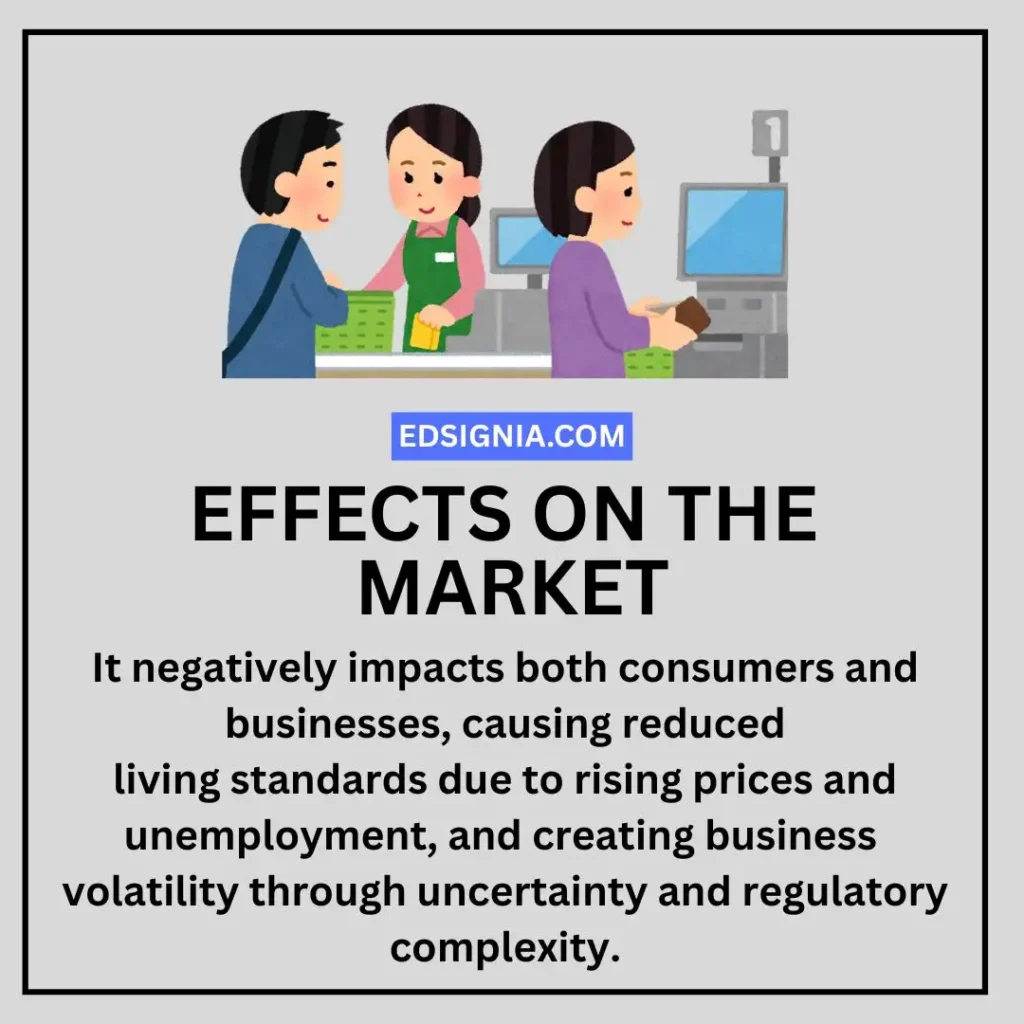
Best Course of Action
Enough with the cynical talk, let’s try to look for solutions which can help resolve this problem. To be completely honest, there is not a lot which can be done because this is a Catch-22 situation. This is because one corrective measure will lead to exacerbating the issue at the other end.
Let’s look at an example to understand this better. To control inflation, the government may reduce the interest rate for saving schemes and levy higher taxes. This will be unwise because the people who are employed will have even less real income and unemployed folks will get less interest on their savings.
Utilization of Reserves
With everything that has been said, there are still ways to come out of Stagflation. The administration will have to use up their resources to help their citizens in need by providing either direct or indirect monetary incentives. They will also have to remove red tape which inhibits innovation and makes it harder for businesses to operate efficiently.
Investment in infrastructural development and renewable energy sources can also help tackle the problem of Stagflation. This is because it will lay a solid foundation for industries and provide them an alternative fuel supply for the manufacturing process when the regular options are unavailable.
Supply Chain Diversification
The biggest and arguably the most important reason for Stagflation is the reliance on a single supply chain. When a nation faces economic distress, it will do everything to get out of the situation they are in. Now, if the same nation has to maintain their supply to their partners in such a period, it becomes an obligation too difficult to fulfill.
Therefore, it is imperative that every nation maintains their own local production units and keeps a reserve of raw materials for manufacturing. Along with this, utilizing the benefits of globalisation by having allies is always a great idea. This allows for a diverse supply chain and it can ensure that production does not suffer from an unforeseen event in the near future.
Major Policy Reforms
The easiest and most efficient way to ensure that a situation like Stagflation never happens is to undertake essential policy reforms. To do this, the administration has to learn from the past and try to maximise economic efficiency without compromising with the needs of the general public. Since the major causes of stagflation is the increase in inflation mixed with a job crisis and slowed growth rate, policies have to be formulated to deal with all of them simultaneously.
Reducing bureaucratic hurdles, launching skill enhancement programs, and investing in local small scale businesses should be the major reforms to tackle such an economic challenge. This is easier said than done but stagflation as in issue requires a nation to apply a multilayered approach. Only then, such negative economic conditions can be tackled successfully.
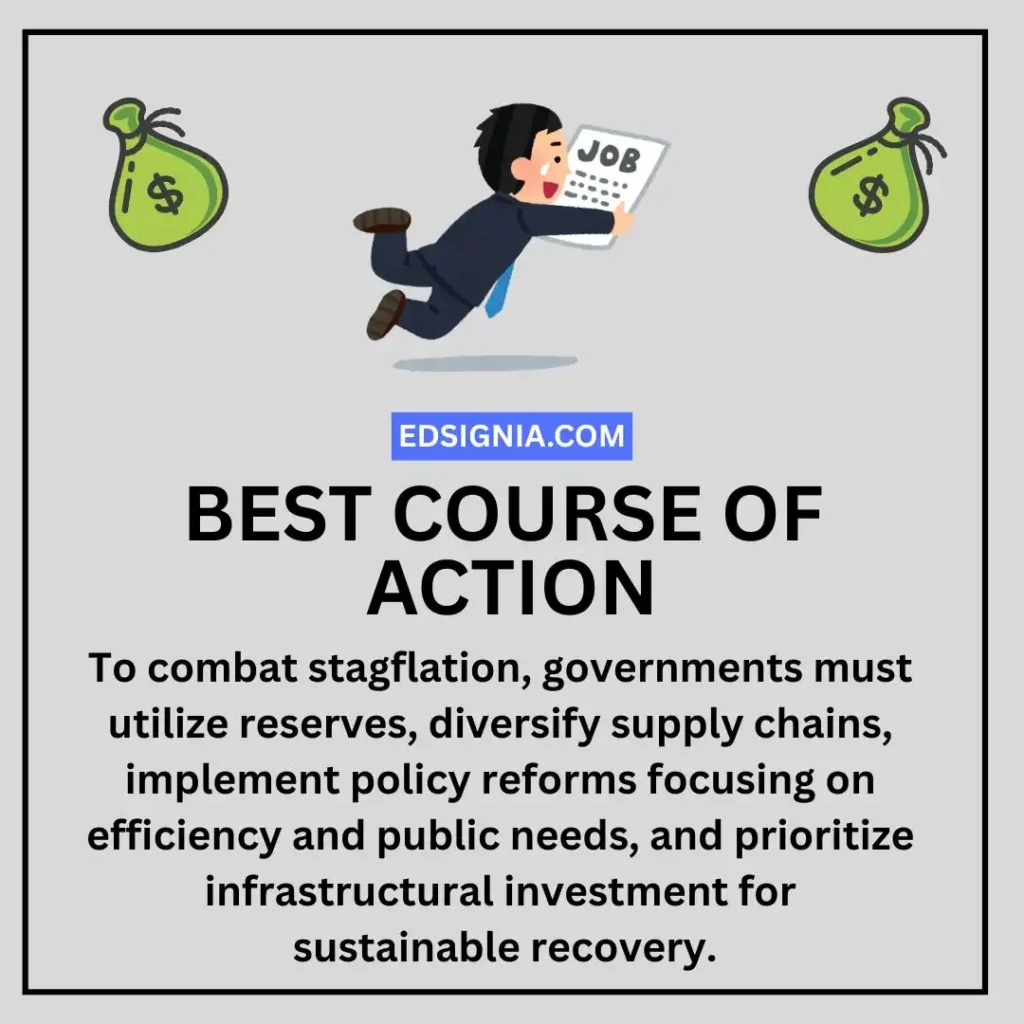
Conclusion
There you have it folks, we took a closer look at stagflation which is an economic condition which affects the nation from all sides collectively. We looked at how it happens, what detrimental effects it has and the best ways to take on this challenge. To sum it up, it is a condition where inflation meets stagnation and unemployment is at a rise.
It is a challenging economic crisis which is not as famous as its siblings like inflation and recession but it is just as problematic. It also affects the general public and the businesses alike which is quite uncommon. In the course of this article, we took a quick look at what is the best course of action to follow to deal with this scenario.
If you have more questions about the topic at hand, feel free to let us know in the comments down below. For giving your valuable feedback, you can choose to use our Contact page and you can also choose to read a similar article on “Strategic HRM“. That’s all from my side for the day (or night depending on your time zone). I hope to meet you soon with another insightful discussion.

